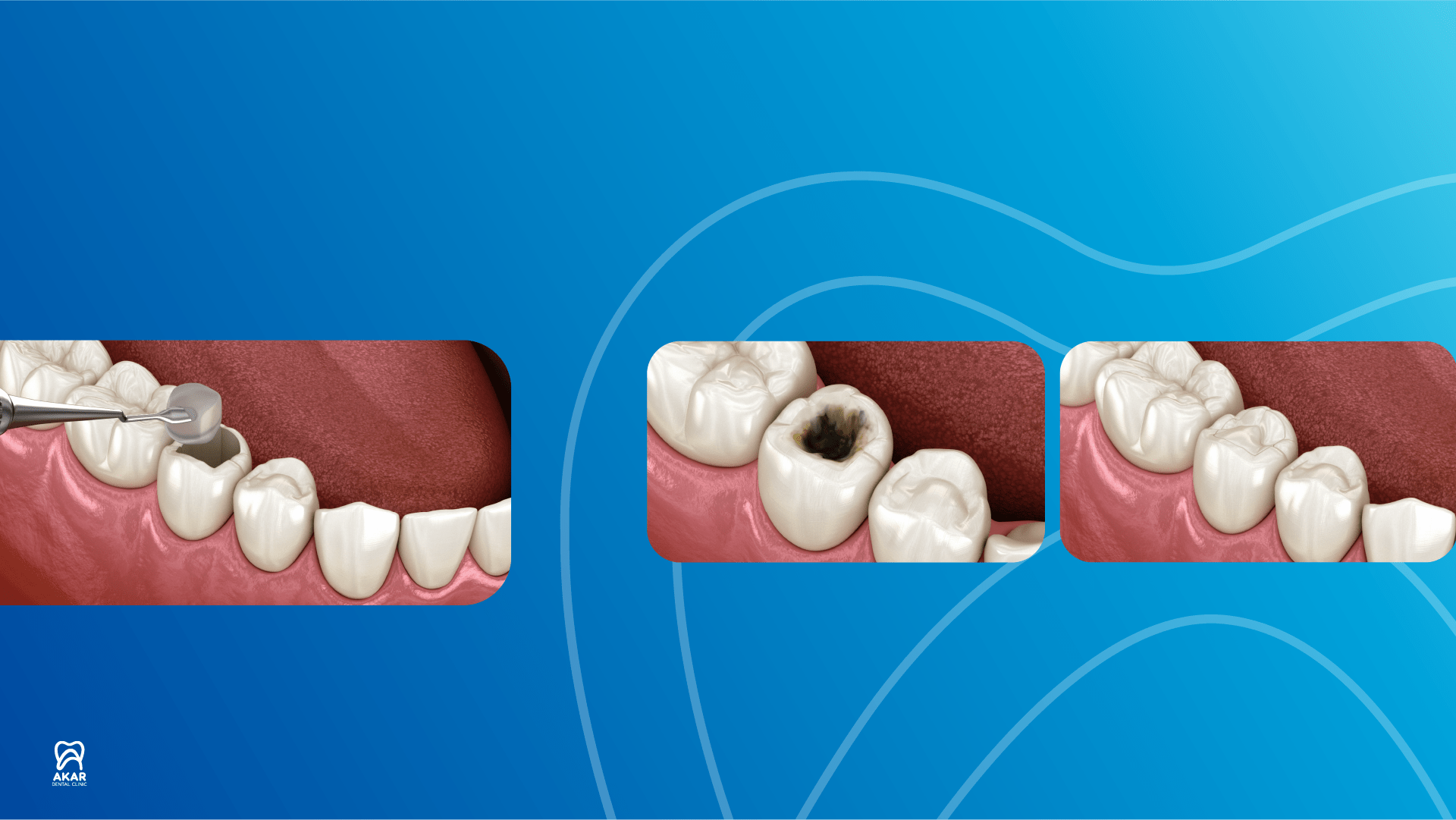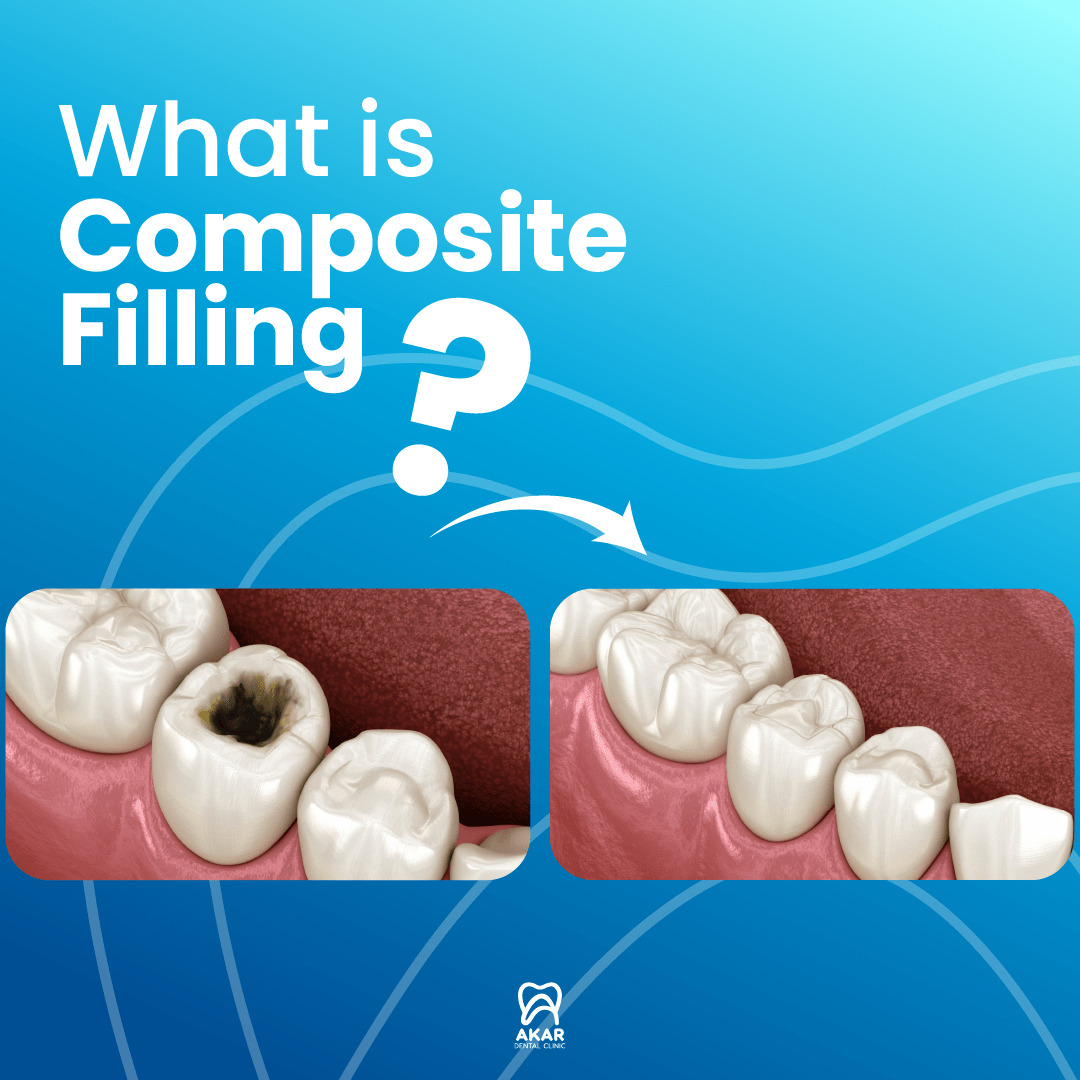

 Composite Filling, also known as a tooth-colored filling, is a type of dental filling material in order to repair decayed, chipped or broken teeth. Composites are made from resin materials that match the natural teeth color. Generally composite filling materials are used to complete any lack of tooth area for the condition such as when patients would not like to crown or veneers. Composite fillings take place in dental solution with its quick application, compared to other types of dental treatments which are applied to the decayed, chipped, or fractured tooth.
Composite Filling, also known as a tooth-colored filling, is a type of dental filling material in order to repair decayed, chipped or broken teeth. Composites are made from resin materials that match the natural teeth color. Generally composite filling materials are used to complete any lack of tooth area for the condition such as when patients would not like to crown or veneers. Composite fillings take place in dental solution with its quick application, compared to other types of dental treatments which are applied to the decayed, chipped, or fractured tooth.
What is Composite Filling?
 Teeth can become damaged over time for various reasons. This damage can be a bruise, crack, or fracture—that’s why the filling procedure is performed to repair damaged teeth. A composite dental filling is one of the most popular techniques for repairing damages like these.
Teeth can become damaged over time for various reasons. This damage can be a bruise, crack, or fracture—that’s why the filling procedure is performed to repair damaged teeth. A composite dental filling is one of the most popular techniques for repairing damages like these.
Composite fillings are a popular alternative to traditional amalgam (metal) fillings because they offer a more natural appearance and require less removal of healthy tooth structure. The composite material is bonded to the tooth, which helps to provide additional strength and support to the tooth structure. Additionally, composite fillings are less likely to cause tooth sensitivity and are less likely to expand and contract with changes in temperature, which can cause further damage to the tooth.
Composite Fillings Process
 Composite filling procedure is generally performed in a single session. The process of getting a composite filling typically involves the following steps:
Composite filling procedure is generally performed in a single session. The process of getting a composite filling typically involves the following steps:
-
Numbing the area:
Dental area is numbed by the dentist by using local anesthetic that helps to minimize any discomfort along the procedures.
-
Removing decay:
With the help of dental drill or laser the decayed or damaged portion of the tooth is removed by the dentist.
-
Cleaning the tooth:
Any bacteria or debris located on the tooth is cleaned by removing, for the filling placement.
-
Applying the composite resin:
The dentist applies a composite resin material to the tooth in layers, and special light is used to make layers harden.
-
Shaping and polishing:
The dentist shapes and polishes the composite resin, to ensure natural appearance for adaptation to the other teeth, after filling placement.
-
Checking your bite:
At the end, the dentist checks the functionality of the fillings regarding the chewing and biting activity.
The process typically takes about 30 minutes to an hour, depending on the size and location of the filling. After the procedure, any sensitivity or discomfort occurring experience may be seen normally that subside within a few days. It is normal for the patient to experience heat or cold sensitivity after the composite filling is first placed. This tenderness decreases shortly after the tooth gets used to the filling. As a precaution, food should not be consumed for several hours after composite filling. Also, the consumption of sticky products such as chewing gum should not be preferred in the first few weeks due to the potential damage to the filling.
Benefits of Composite Fillings
 Composite fillings allow the treatment of dental tartars. Moreover, they do not cause aesthetic concerns while doing so. The filling process reduces the number of bacteria in the mouth. The risk of tooth decay and infection is reduced since the filling reduces the bacteria in the mouth. On the other hand, composite fillings are attached to the tooth structure and provide support to the tooth. A composite filling treats caries and repairs chipped, broken, or abrasion teeth.
Composite fillings allow the treatment of dental tartars. Moreover, they do not cause aesthetic concerns while doing so. The filling process reduces the number of bacteria in the mouth. The risk of tooth decay and infection is reduced since the filling reduces the bacteria in the mouth. On the other hand, composite fillings are attached to the tooth structure and provide support to the tooth. A composite filling treats caries and repairs chipped, broken, or abrasion teeth.
Amalgam Fillings vs. Composite Fillings
 Even though both filling materials are reliable aesthetically, the composite filling type is preferred because it has a natural appearance. Composite can be preferred for fillings which are made for both front and back areas in the mouth due to its high compression resistance. In short, it is possible to say that composite fillings are preferred in terms of image, and amalgam fillings are preferred in terms of durability which both filling forms are suitable for human health,
Even though both filling materials are reliable aesthetically, the composite filling type is preferred because it has a natural appearance. Composite can be preferred for fillings which are made for both front and back areas in the mouth due to its high compression resistance. In short, it is possible to say that composite fillings are preferred in terms of image, and amalgam fillings are preferred in terms of durability which both filling forms are suitable for human health,
Why Choose Turkey for Composite Fillings?
Turkey is one of the best countries for dental care, not only for its affordable prices but also for its skilled professionals. At Akal Dental, composite filling treatment is performed with advanced tomography devices and techniques without eroding and damaging the patient’s oral or tooth structure. We provide services with customer-friendly prices and various opportunities to meet your composite filling needs in Turkey.
No pain is felt during composite filling because local anesthesia is used.
Composite fillings can be used for 10-15 years, which takes 30 minutes to complete.
There are no health risks associated with composite fillings.
Composite fillings have a more natural appearance and a stronger structure. This is why people frequently choose these types of fillings.
Composite fillings do not damage the tooth. On the contrary, they support the prevention of caries in the teeth and the restoration of oral hygiene.
You can contact us to get more information about our oral and dental health treatments and the opportunities we offer.